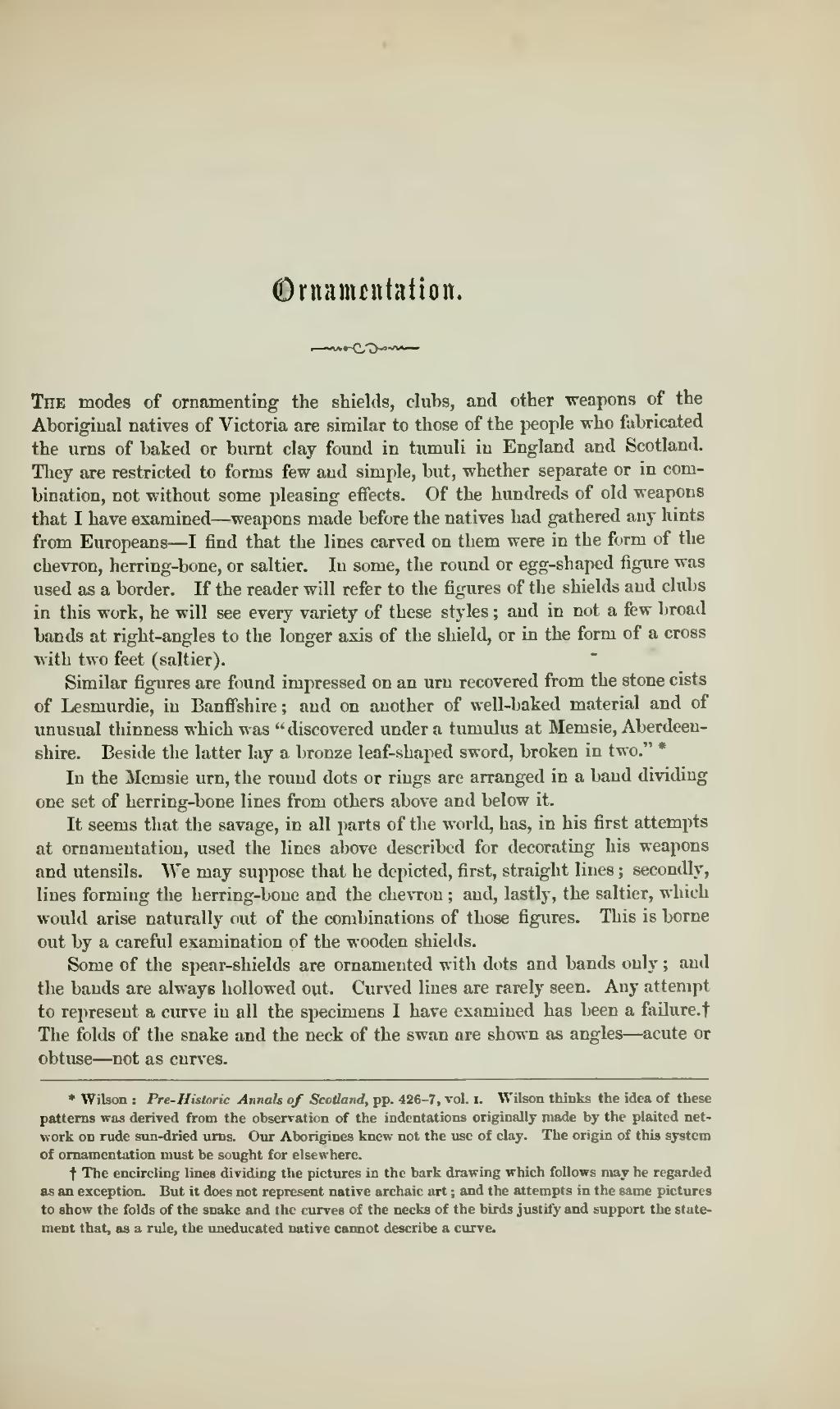The modes of ornamenting the shields, clubs, and other weapons of the Aboriginal natives of Victoria are similar to those of the people who fabricated the urns of baked or burnt clay found in tumuli in England and Scotland. They are restricted to forms few and simple, but, whether separate or in combination, not without some pleasing effects. Of the hundreds of old weapons that I have examined—weapons made before the natives had gathered any hints from Europeans—I find that the lines carved on them were in the form of the chevron, herring-bone, or saltier. In some, the round or egg-shaped figure was used as a border. If the reader will refer to the figures of the shields and clubs in this work, he will see every variety of these styles; and in not a few broad bands at right-angles to the longer axis of the shield, or in the form of a cross with two feet (saltier).
Similar figures are found impressed on an urn recovered from the stone cists of Lesmurdie, in Banffshire; and on another of well-baked material and of unusual thinness which was "discovered under a tumulus at Memsie, Aberdeenshire. Beside the latter lay a bronze leaf-shaped sword, broken in two."[1]
In the Memsie urn, the round dots or rings are arranged in a band dividing one set of herring-bone lines from others above and below it.
It seems that the savage, in all parts of the world, has, in his first attempts at ornamentation, used the lines above described for decorating his weapons and utensils. We may suppose that he depicted, first, straight lines; secondly, lines forming the herring-bone and the chevron; and, lastly, the saltier, which would arise naturally out of the combinations of those figures. This is borne out by a careful examination of the wooden shields.
Some of the spear-shields are ornamented with dots and bands only; and the bands are always hollowed out. Curved lines are rarely seen. Any attempt to represent a curve in all the specimens I have examined has been a failure.[2] The folds of the snake and the neck of the swan are shown as angles—acute or obtuse—not as curves.
- ↑ Wilson: Pre-Historic Annals of Scotland, pp. 426-7, vol. I. Wilson thinks the idea of these patterns was derived from the observation of the indentations originally made by the plaited network on rude sun-dried urns. Our Aborigines knew not the use of clay. The origin of this system of ornamentation must be sought for elsewhere.
- ↑ The encircling lines dividing the pictures in the bark drawing which follows may he regarded as an exception. But it does not represent native archaic art; and the attempts in the same pictures to show the folds of the snake and the curves of the necks of the birds justify and support the statement that, as a rule, the uneducated native cannot describe a curve.
